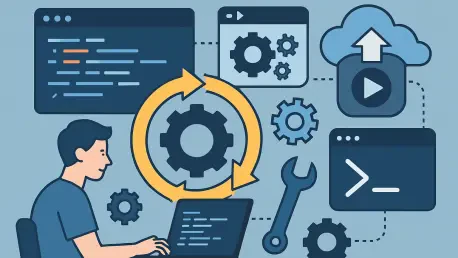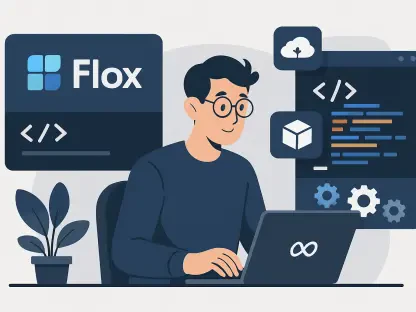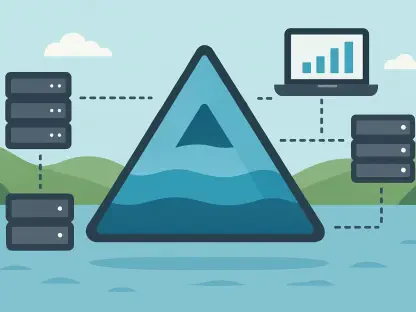I’m thrilled to sit down with Vijay Raina, a seasoned expert in enterprise SaaS technology and a thought leader in software design and architecture. With years of experience navigating the complexities of cloud services and developer tools, Vijay has a unique perspective on the transformative power of developer platforms. In this conversation, we dive into his personal journey of transitioning to a unified developer platform, explore the principles behind platform engineering, and uncover the human and technical elements that shape a stellar developer experience. From the initial hesitations to becoming a contributor, Vijay shares insights on automation, golden paths, and the evolving role of AI in modern platforms.
Can you walk us through your initial reaction when you first learned about transitioning to a developer platform?
I’ll be honest—when I first heard about the shift, I was skeptical. I’d spent years manually managing cloud services, from provisioning clusters to tweaking deployment scripts, and I felt like I had a good handle on things. It was slow and exhausting, but it was familiar. The idea of a unified platform with automation and abstracted infrastructure sounded promising, but also a bit unnerving. I wondered if it could really handle the nuances of what I’d been doing by hand. There was this mix of curiosity and doubt, like stepping into uncharted territory.
What stood out as the most significant change when you moved from manual cloud management to using this platform?
The biggest change was the shift from micromanaging every detail to trusting a system that handled the heavy lifting. Manually, I’d spend hours on provisioning or configuring networks, often waiting on tickets or change windows. With the platform, those repetitive tasks were automated through self-service pipelines. It was a complete mindset switch—less about controlling every step and more about focusing on the actual code and innovation. That freedom to prioritize what mattered was eye-opening.
How did it feel to let go of manual control over tasks like provisioning and configuring, and was it tough to trust the platform initially?
Letting go was hard at first. I’d built a sense of security in doing things myself, even if it was tedious. Trusting the platform felt like handing over the wheel to someone else. There were moments of doubt—would it mess up a deployment? Would I lose flexibility? But as I started using it, seeing how seamlessly it set up environments or enforced policies, that trust grew. It wasn’t about losing control; it was about gaining efficiency. Still, it took a few successful deployments to fully relax into it.
What surprised you the most during your onboarding to this new way of working?
I was genuinely surprised by how intuitive the “golden paths” were. These pre-defined workflows guided me through deployments with minimal decisions on my part. I expected a steep learning curve or a wall of complex docs, but instead, I logged into the portal and saw a dashboard that just made sense. Picking a template and watching the platform auto-provision everything was almost magical. It stripped away so much cognitive load—I didn’t realize how much mental energy I’d been wasting on setup until it was gone.
How would you describe platform engineering now that you’ve experienced it firsthand?
To me, platform engineering is the art of building systems that empower developers by removing friction. It’s about designing automation, guardrails, and workflows that let us focus on creating rather than managing infrastructure. I see it as a discipline that bridges the gap between raw tools and actionable outcomes. Experiencing it showed me it’s not just technical—it’s also about enabling a cultural shift where developers and ops align on shared goals like speed and reliability.
What does the concept of an Internal Developer Platform (IDP) mean to you after this journey, compared to your early understanding?
Initially, I thought an IDP was just a fancy toolset—a dashboard with some bells and whistles. But now, I see it as the tangible result of platform engineering. It’s a self-service environment that ties together automation, security, and consistency, letting developers go from idea to production with confidence. Before, I didn’t grasp how transformative it could be. Now, I see it as a roadmap that connects speed with stability, fundamentally changing how we deliver software.
Can you share an example of how the platform balanced speed and stability in your daily work?
Absolutely. Early on, I needed to deploy a service update quickly. Normally, I’d have spent hours ensuring configs were right and coordinating with ops to avoid breaking anything. With the platform, I used a golden path—a preset workflow—that handled provisioning and policy checks automatically. The deployment took minutes, not hours, and built-in guardrails ensured nothing went off the rails. Stability wasn’t sacrificed for speed; it was baked into the process. That balance was a game-changer for me.
How did the platform engineers support you behind the scenes during your onboarding?
The platform engineers were like silent guardians. I didn’t always see their work directly, but I felt it. They refined automation scripts, updated templates when issues cropped up, and ensured guardrails were tight but not stifling. When I hit a snag—like a confusing environment variable—they were quick to respond through community chats or updated docs. Their focus seemed to be on making the platform invisible in a good way, so I could focus on coding rather than troubleshooting infrastructure.
Of the design principles like runtime, compliance, and Site Reliability Engineering (SRE), which resonated with you the most, and why?
I’d say compliance struck me the most. Coming from a manual setup, I was used to compliance being an afterthought—something we scrambled to address during audits. On the platform, it was woven into every step. Policy enforcement and access controls were automatic, so I didn’t have to second-guess if I was meeting standards. It gave me peace of mind, knowing that governance wasn’t a burden but a built-in safety net. That proactive approach really changed how I viewed compliance.
Can you describe a moment where the platform’s focus on reliable runtime across environments made a difference for you?
There was a time I needed to deploy an app across dev, staging, and production environments. In the past, differences in setup would cause headaches—something would work in dev but fail in prod due to a config mismatch. The platform standardized the runtime, automating infrastructure setup so the app behaved consistently everywhere. I could deploy with confidence, knowing it wouldn’t break unexpectedly. That reliability saved me from countless late-night debugging sessions.
What’s your take on how AI is shaping the developer experience within platforms, based on your exposure to tools like onboarding assistants or bots?
AI is becoming a quiet but powerful ally in the developer space. During my onboarding, I used AI-powered assistants in the portal that explained errors or suggested templates on the fly. There were also bots for managing access or creating configs, which followed org policies without me needing to dig through manuals. It’s not about replacing engineers; it’s about amplifying them. These tools cut down onboarding time and blockers, letting me focus on building rather than figuring out logistics. It’s exciting to see AI evolve in this space.
Looking ahead, what’s your forecast for the role of developer platforms in shaping the future of software development?
I believe developer platforms will become the backbone of software delivery in the coming years. As complexity grows—think multi-cloud, hybrid environments, and stricter regulations—platforms will be essential for abstracting that chaos. They’ll continue to evolve with AI and automation, becoming smarter and more personalized to developer needs. My forecast is that platforms won’t just be tools; they’ll be ecosystems where collaboration, innovation, and reliability converge, fundamentally redefining how teams build and ship software.









